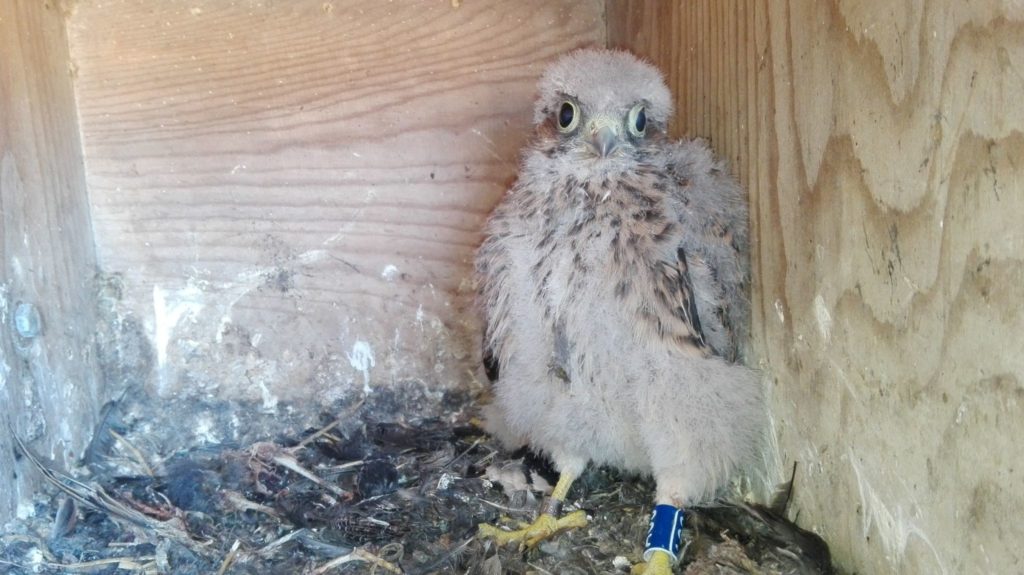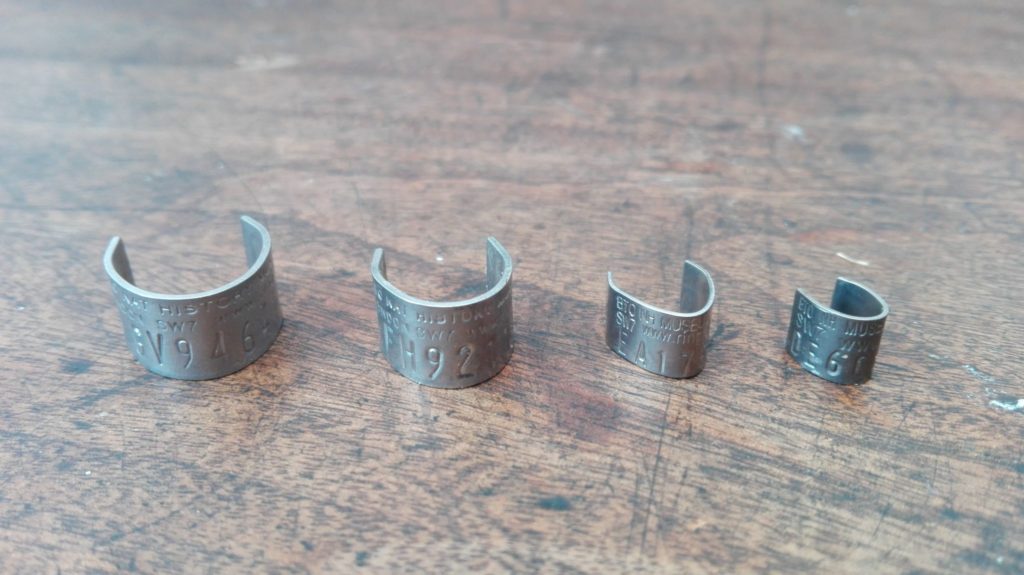
This is one of the questions we’re most frequently asked in relation to the Trust’s British Raptor Programme. It is often asked in the context of the potential for using radio-tracking or satellite-tagging as alternatives.
We ring birds because it provides an efficient and inexpensive means of individually identifying each bird. Once a ringed bird is re-encountered (either through the ring number being read in the field or the bird being caught or found dead) it is possible to infer information about its movements, dispersal, survival and territory use. For species such as Barn Owls, which often use the same nest boxes throughout the year, ringing is especially useful because it provides many opportunities for resighting/recapture. Being able to identify the bird using the nest box on each visit provides us with a wealth of data to help in answering questions such as: which two birds are paired? Does the pair stay together? How successful is a particular pair? Does productivity vary with age of the male or female? How far do the young go when they fledge? We also ring all birds that are treated in the National Bird of Prey Hospital™ to help us determine the level of success of our rehabilitation methods.
Compared with other techniques, ringing is very inexpensive. At current prices, around 110 Barn Owls/Tawny Owls or 900 Kestrels/Little Owls can be ringed for the same price as fitting one bird with a radio-transmitter. These figures can be multiplied by 25 for the cost of one satellite tag.
The UK ringing scheme is operated by the British Trust for Ornithology (BTO) which issues ringing permits to qualified persons for the catching and ringing of wild birds. In order to gain one of these permits an aspiring ringer goes through a training process taking, initially, at least two years.
Primarily, this training is to ensure that the new ringer can use all of the techniques safely i.e. without causing any injury to birds, but there is a lot of other information to learn. This includes how to work out the age and sex of each bird, understanding moult strategies and how to safely fit and remove rings. There are many other skills which must be learnt during this training and these all ensure that every ringer is aware of the need for care when undertaking the activity. Before obtaining a permit the trainee is assessed by other ringers. As a result of these requirements there are comparatively few (2600) trained and active ringers in the UK.
The rings fitted to birds are made from a variety of durable and corrosion-resistant metal alloys. Each species of British bird is designated its own ring size and this usually weighs only a very small fraction of the bird’s total weight – for the species we work with, each ring weighs around 0.5% of the bird’s body weight. Because ringing is used to provide information on the bird’s ecology, it is important that it does not affect behaviour or survival.
For many bird species, very few that are ringed (<2%) are ever recovered and reported. Because the generation of population models is reliant on reports of these birds, every record is extremely valuable. So, if you find a dead bird, send the details of the bird species, ring number, where and when it was found and what condition it was in either to the address on the ring or online at https://app.bto.org/euring/lang/pages/rings.jsp.

Selection of ring sizes for raptors – (l-r) G – Barn Owl, Tawny Owl, Fv – Harriers, Esp – Kestrel, Little Owl, Sparrowhawk ♀, D2 – Sparrowhawk ♂
